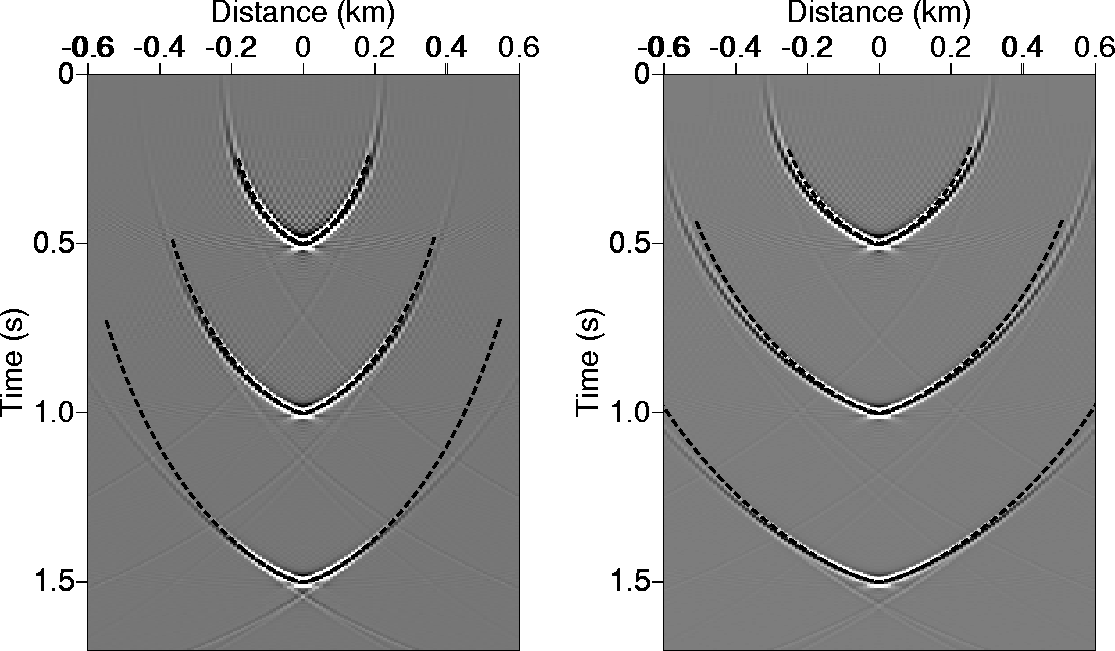 |
Figure 1 Residual post-stack migration operators calculated by solving equation (19), overlaid above synthetic operators. The synthetic operators are obtained by applying TI post-stack migration with
Residual post-stack migration operators can be obtained by generating synthetic data for a model consisting of diffractors for given medium parameters and then migrating the same data with different medium parameters. For example, we can generate diffractions for isotropic media and migrate those diffractions using an anisotropic migration. The resultant operator describes the correction needed to transform an isotropically migrated section to an anisotropic one, that is the anisotropic residual migration operator.
 |
Figure 1 shows such synthetic operators overlaid by
kinematically calculated operators that were computed with the help
of equation (19) (the continuation equations for the case
of small ![]() ). Despite the inherent accuracy of the synthetic
operators, they suffer from the lack of aperture in modeling the
diffractions, and therefore, beyond a certain angle the operators
vanish. The agreement between the synthetic and calculated
operators for small angles, especially for the
). Despite the inherent accuracy of the synthetic
operators, they suffer from the lack of aperture in modeling the
diffractions, and therefore, beyond a certain angle the operators
vanish. The agreement between the synthetic and calculated
operators for small angles, especially for the ![]() case,
promises reasonable results in future dynamic implementations.
case,
promises reasonable results in future dynamic implementations.